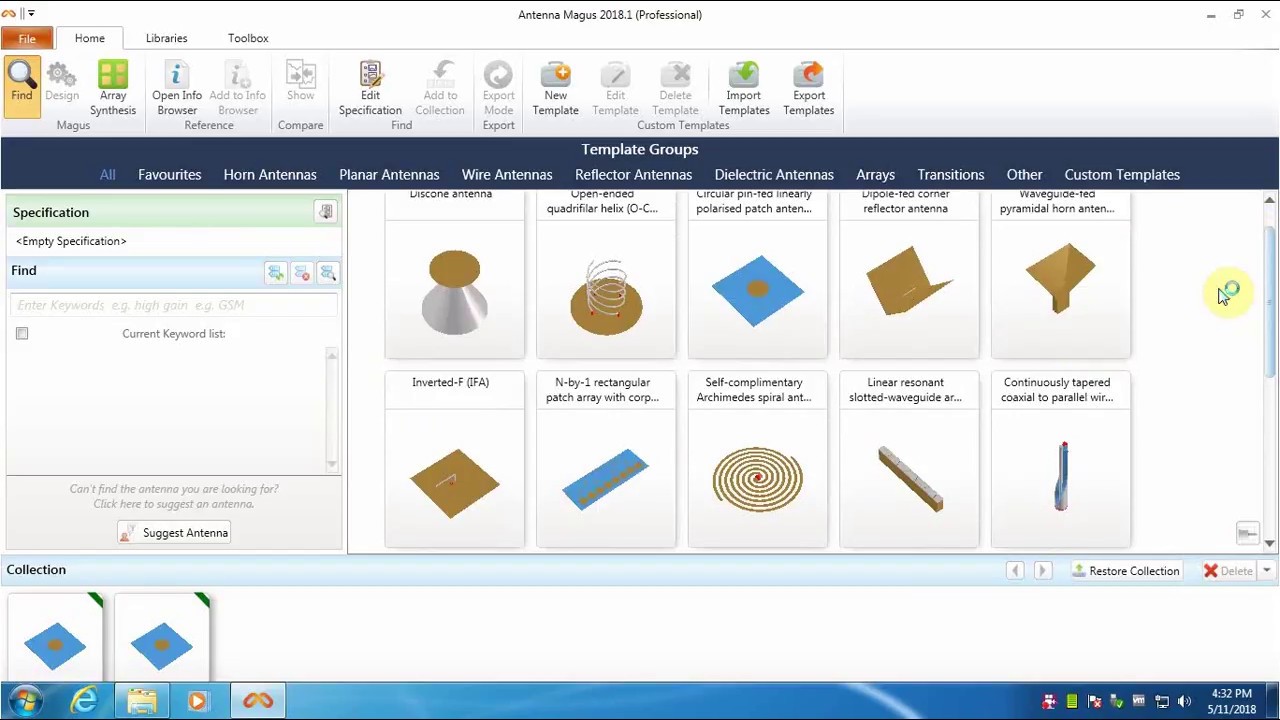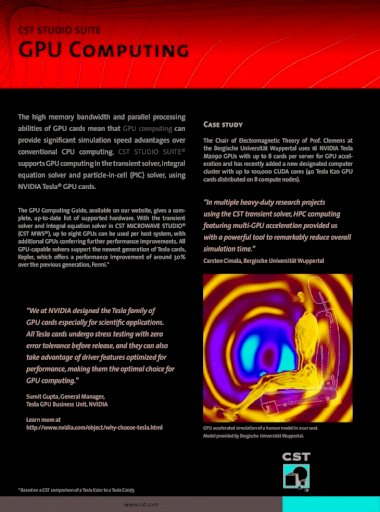

The insights they’ve gleaned from optimizing code allow them to make performance recommendations that allow engineers and researchers to get the most out of their devices. The company’s 3D EM field simulation tools are used in a diverse range of industries, including aerospace, automotive, defense, electronics, education, healthcare, energy, semiconductors and telecommunications. New benchmarks from Computer Simulation Technology (CST) on their recently optimized 3D electromagnetic (EM) field simulation tools compare the performance of the new Intel Xeon Scalable processors with previous generation Intel Xeon processors. The performance benefits of our GPU-accelerated solver were demonstrated in a GPR environment by running a large-scale, realistic (including dispersive media, rough surface topography, and detailed antenna model) simulation of a buried anti-personnel landmine scenario.This sponsored post explores new benchmarks from Computer Simulation Technology on their recently optimized 3D electromagnetic field simulation tools that compare the new Intel Xeon Scalable processors with previous generation Intel Xeon processors. We also note that the equivalent Tesla-series P100 GPU – targeted towards data-centre usage – demonstrates significant overall performance advantages due to its use of high-bandwidth memory. We found the cost–performance benefit of the NVIDIA GeForce-series Pascal-based GPUs – targeted towards the gaming market – to be especially notable, potentially allowing many individuals to benefit from this work using commodity workstations. This is up to 30 times faster than the parallelised (OpenMP) CPU solver can achieve on a commonly-used desktop CPU (Intel Core i7-4790K). Our GPU solver achieved performance throughputs of up to 1194 Mcells/s and 3405 Mcells/s on NVIDIA Kepler and Pascal architectures, respectively. We designed optimal kernels for GPU execution using NVIDIA’s CUDA framework.

We have developed one of the first open source GPU-accelerated FDTD solvers specifically focused on modelling GPR. This is exacerbated by an order of magnitude when solving the inverse GPR problem or when using forward models to train machine learning algorithms. Additionally, forward simulations of GPR can necessitate hundreds of models with different geometries (A-scans) to be executed. The simulation of Ground Penetrating Radar (GPR) is one such challenge, where the GPR transducer, subsurface/structure, and targets must all be included in the model, and must all be adequately discretised. The volumetric nature of the FDTD technique means simulations often require extensive computational resources (both processing time and memory). The Finite-Difference Time-Domain (FDTD) method is a popular numerical modelling technique in computational electromagnetics.


 0 kommentar(er)
0 kommentar(er)
